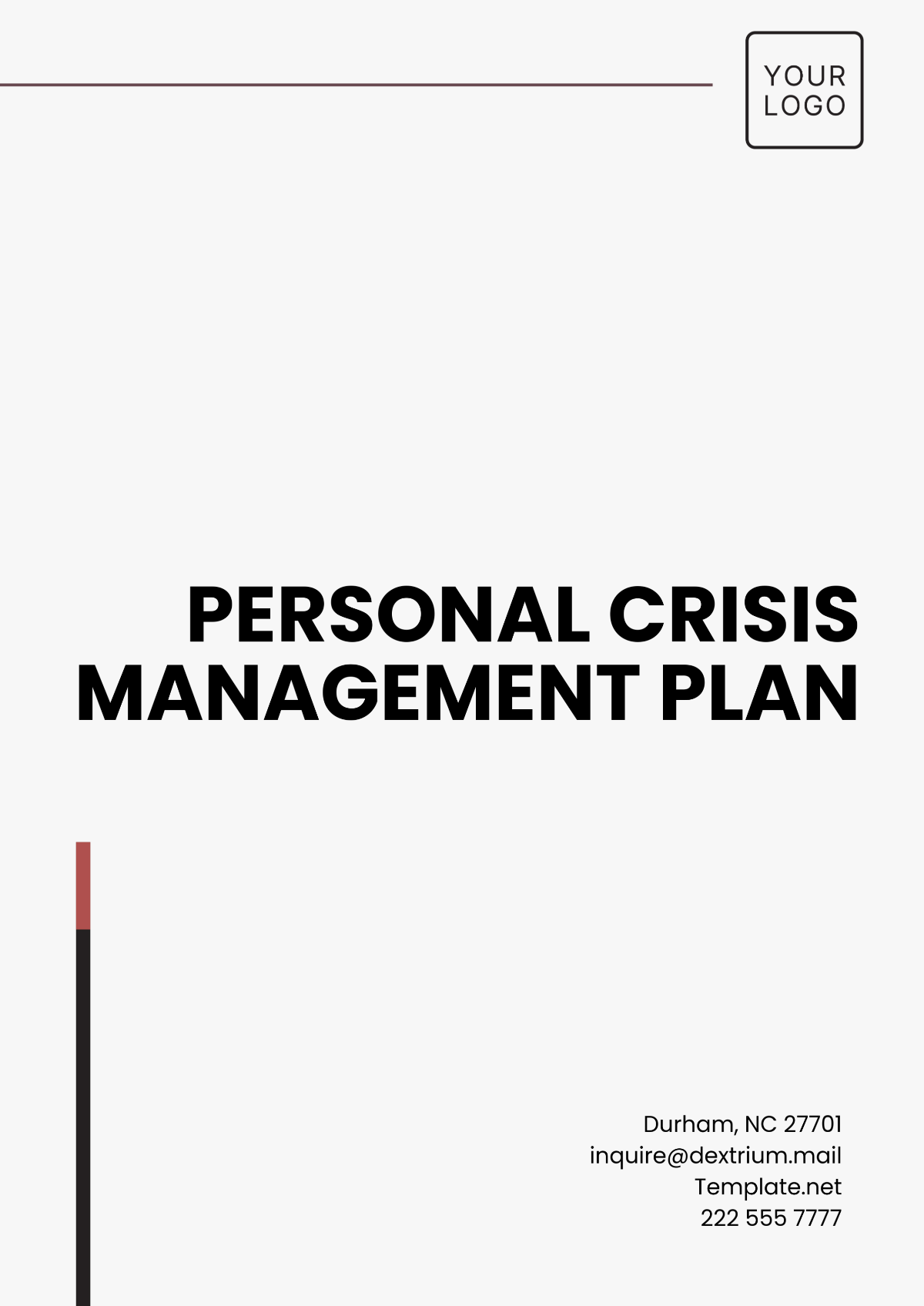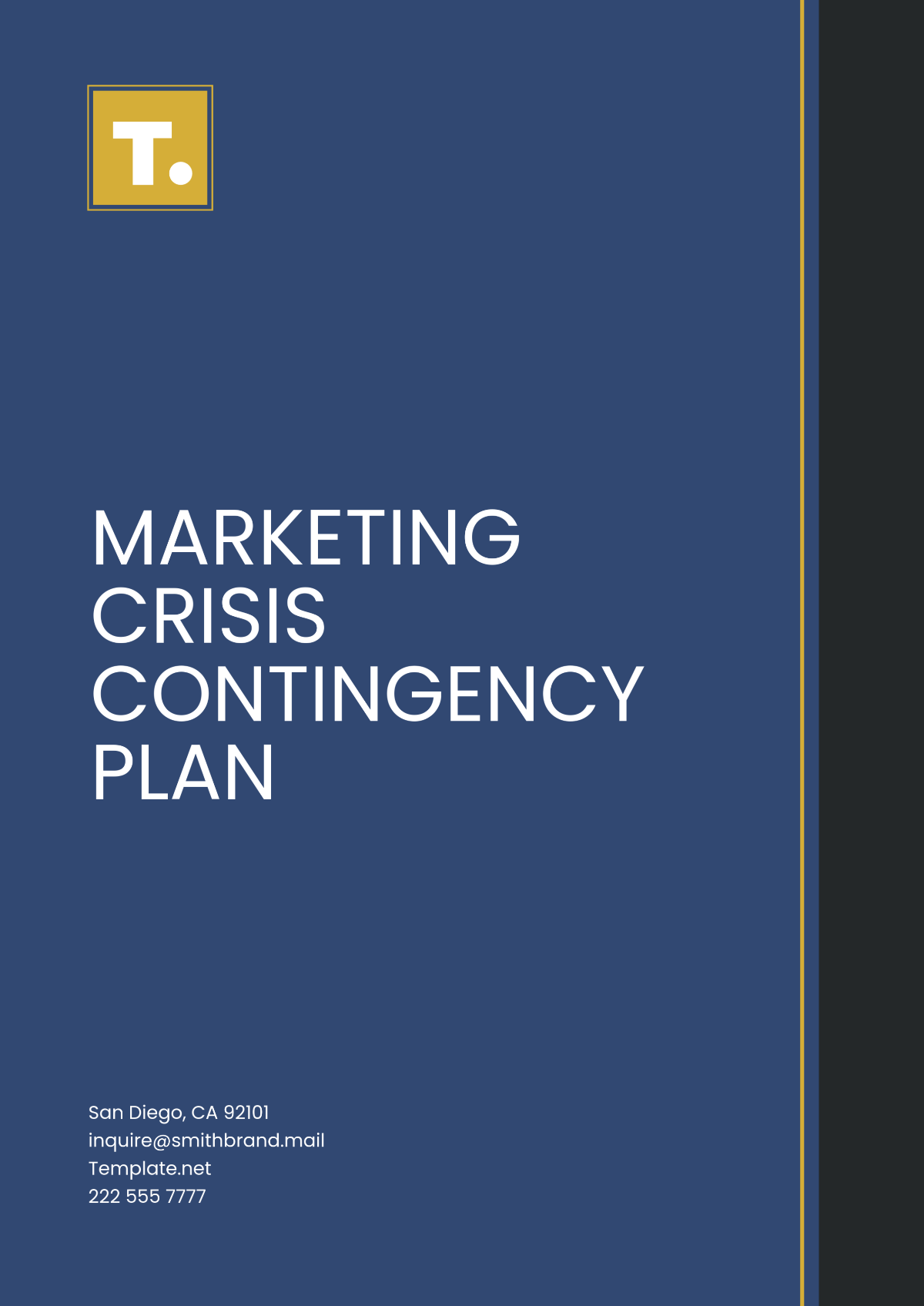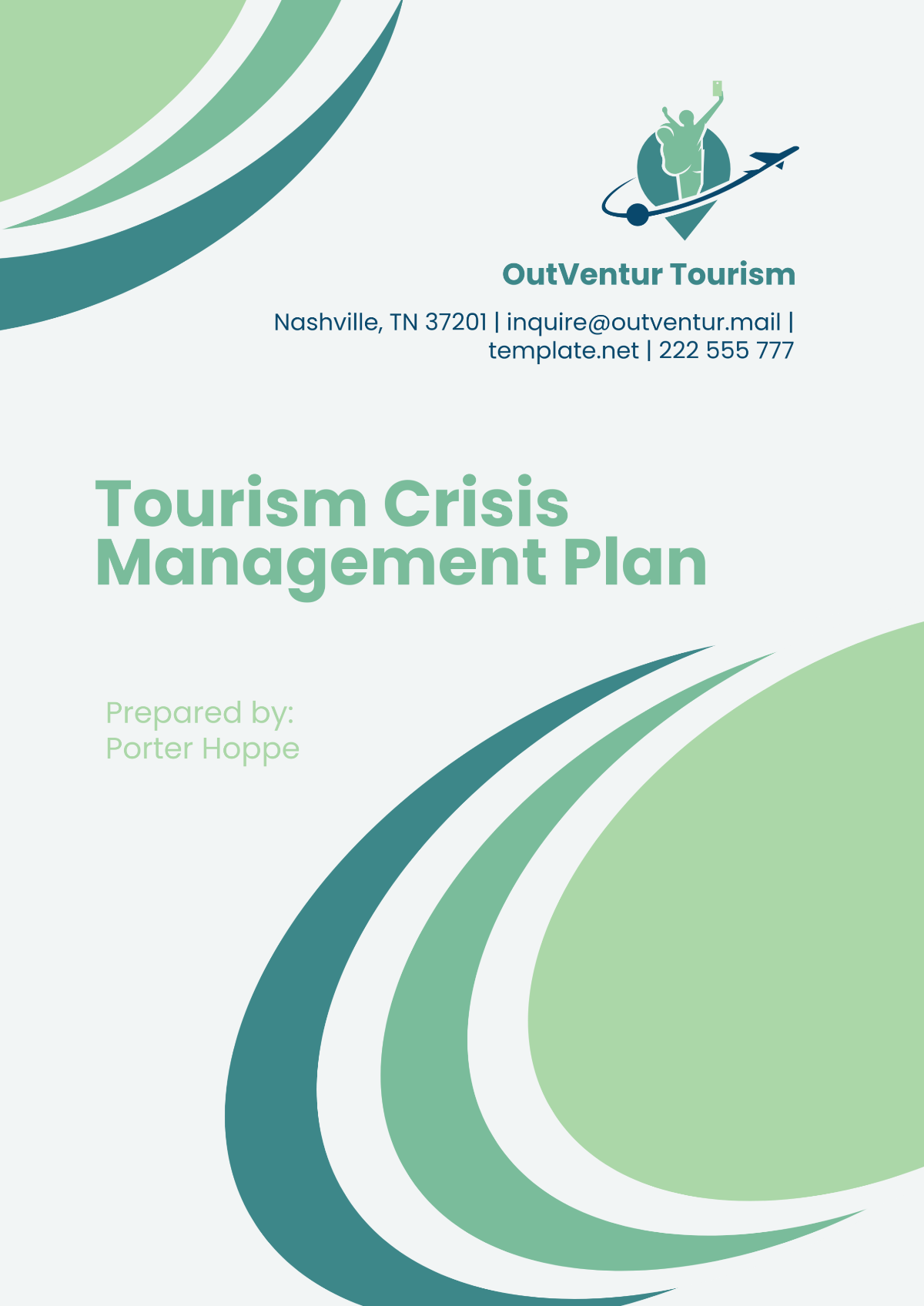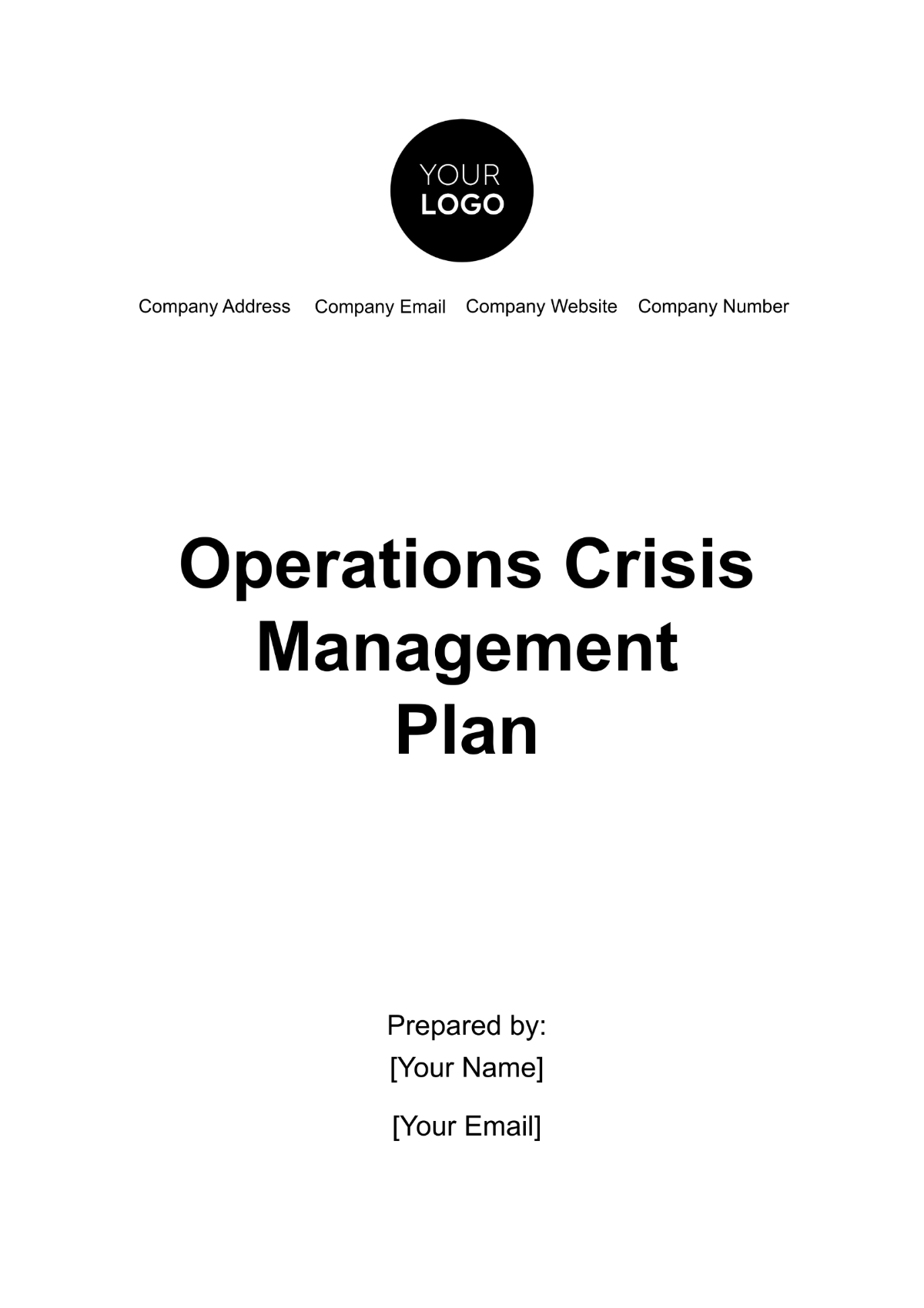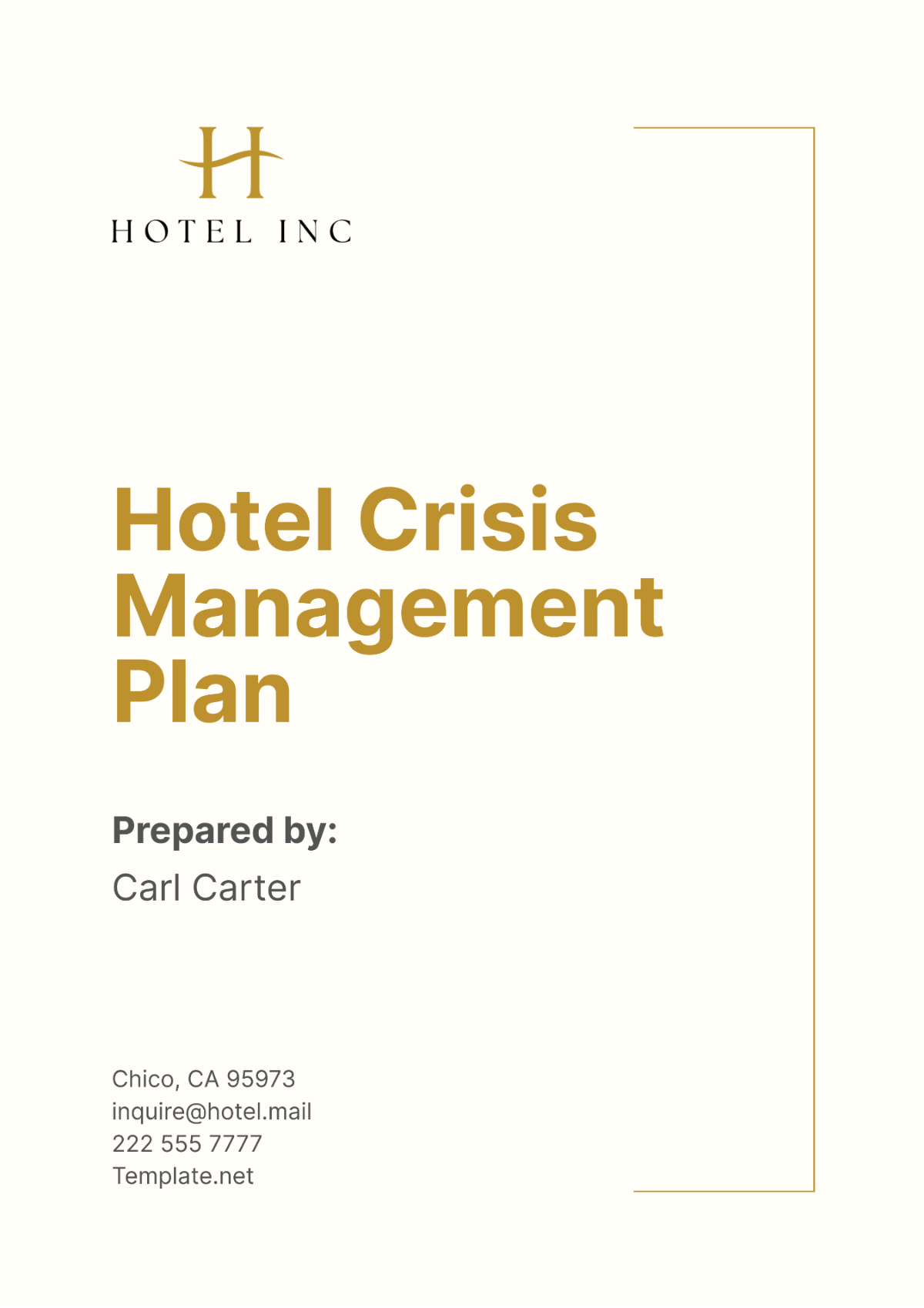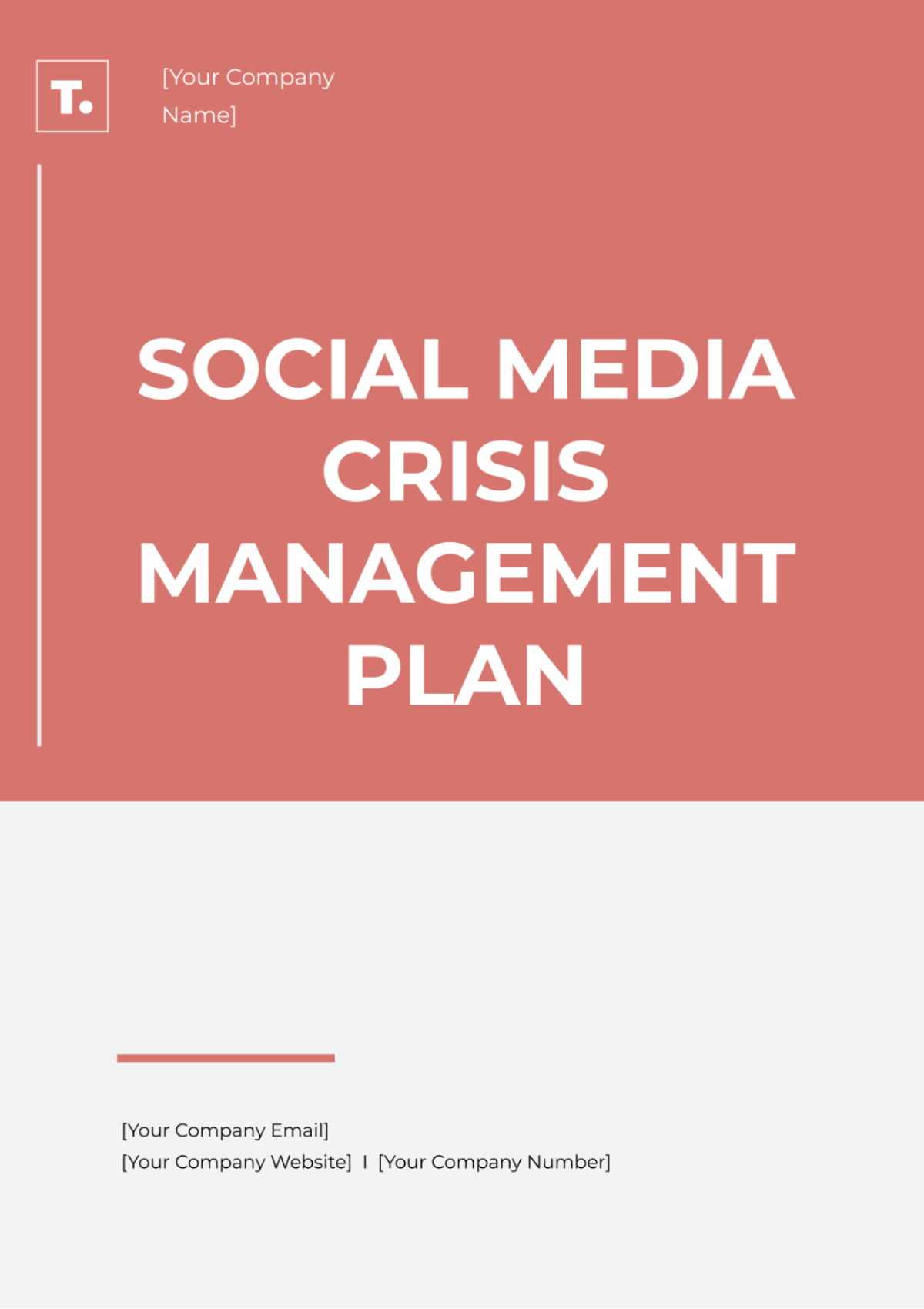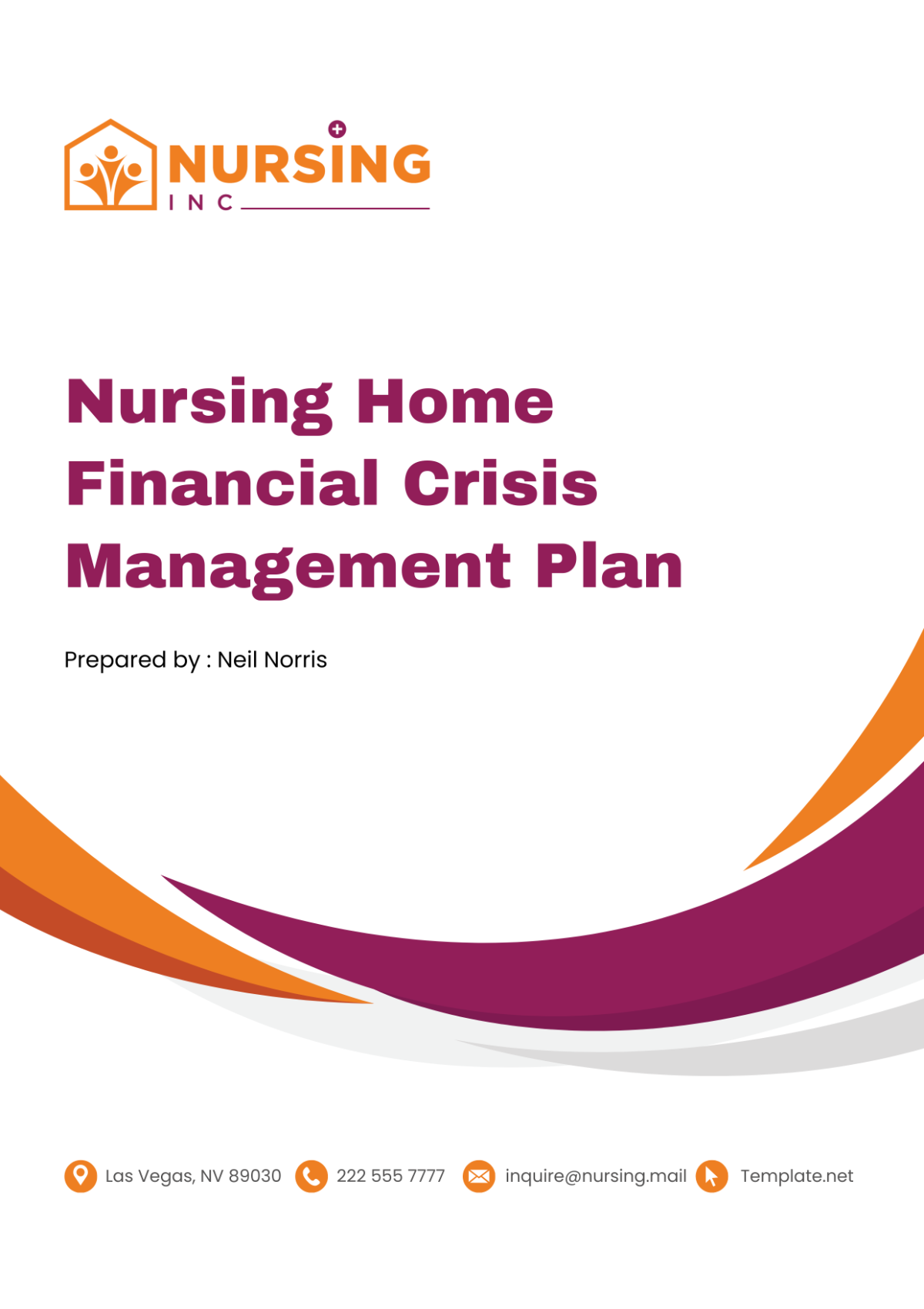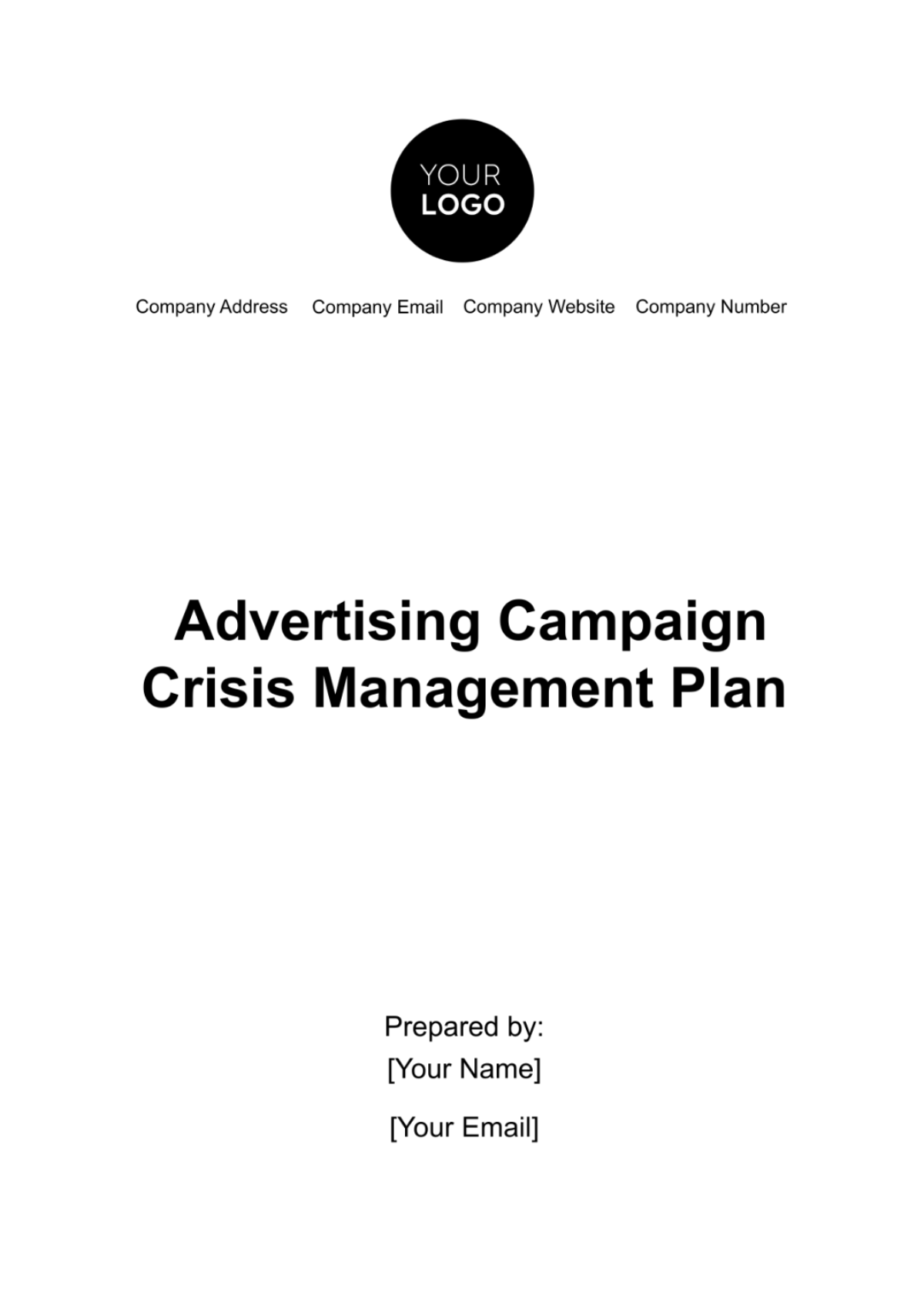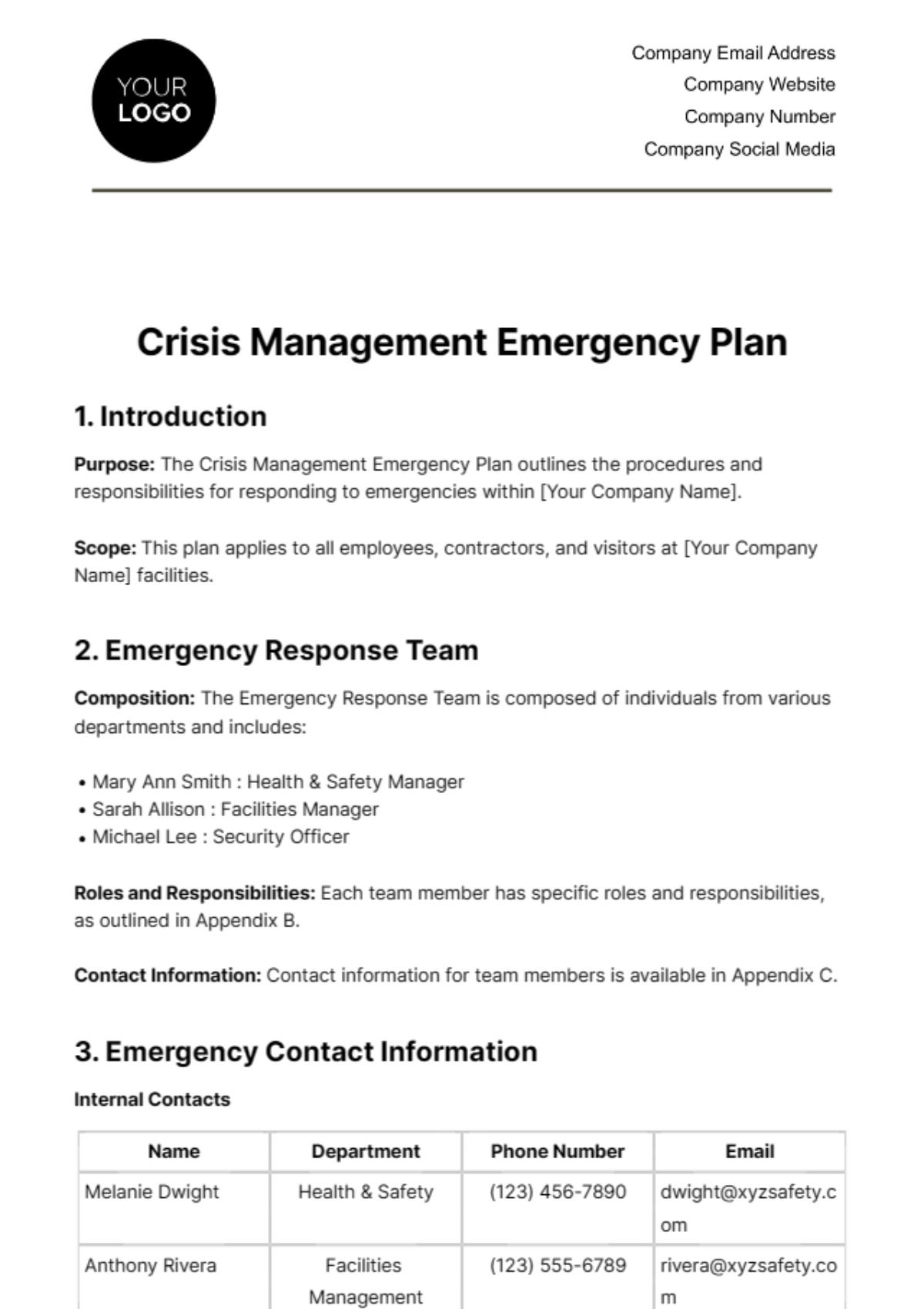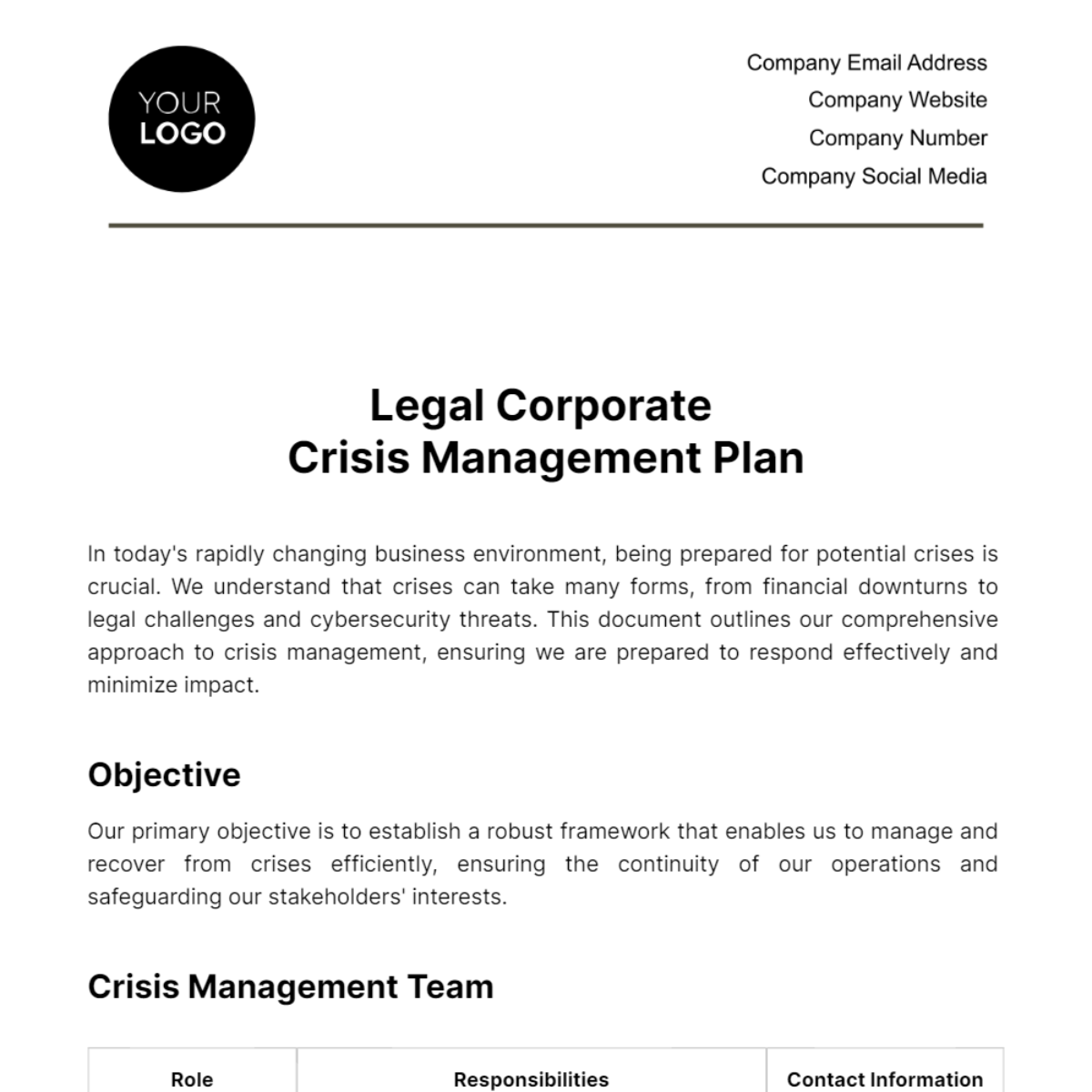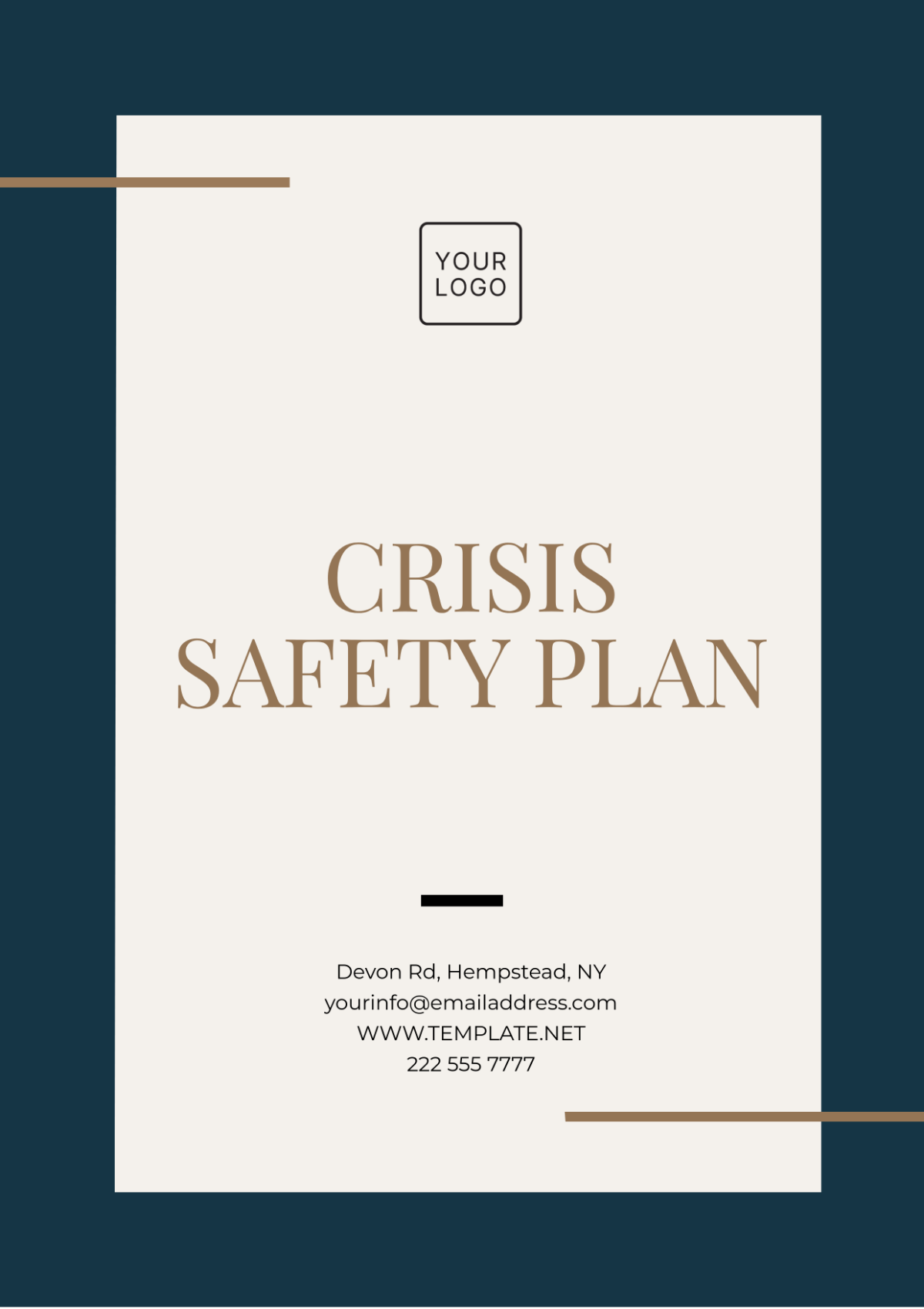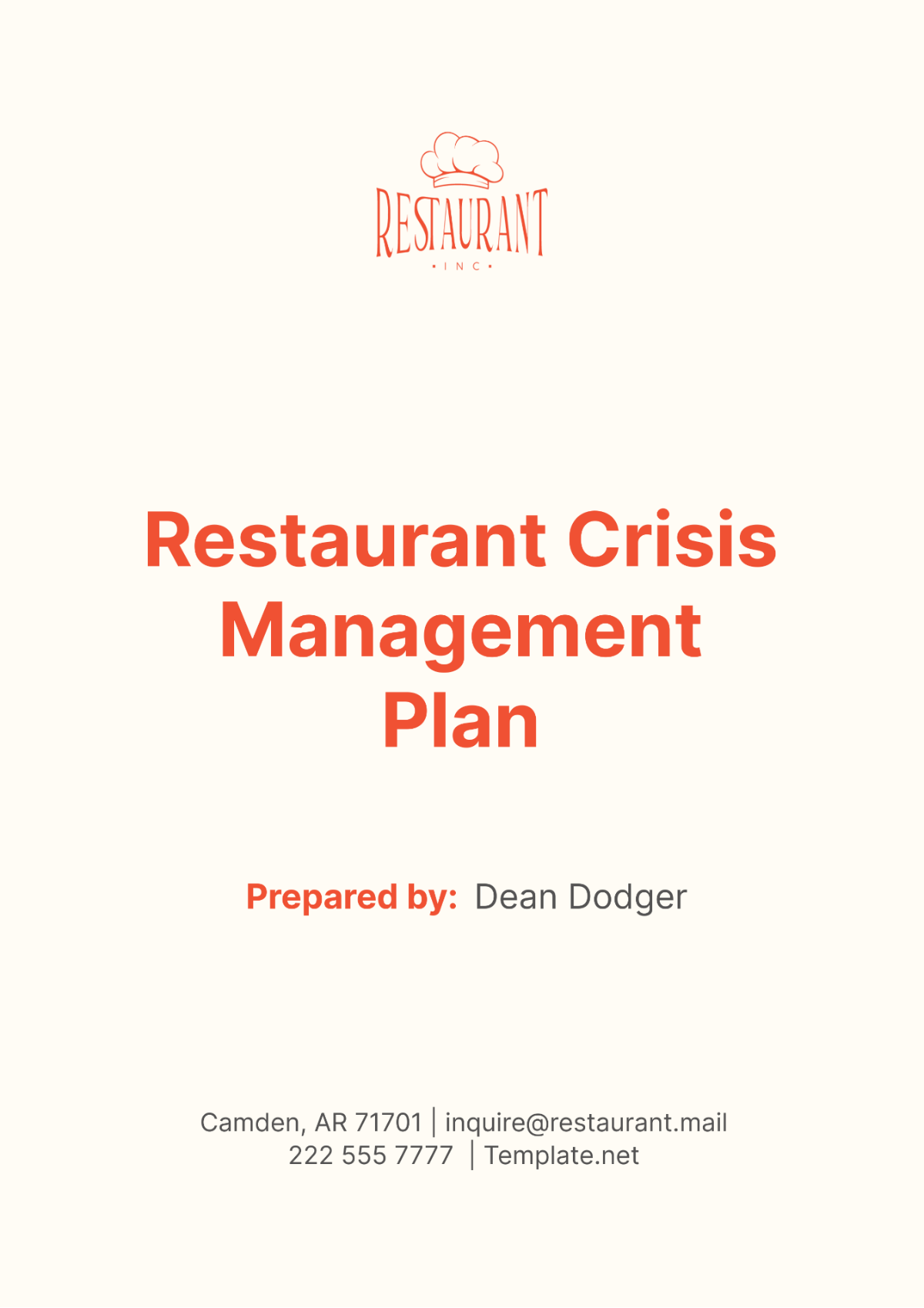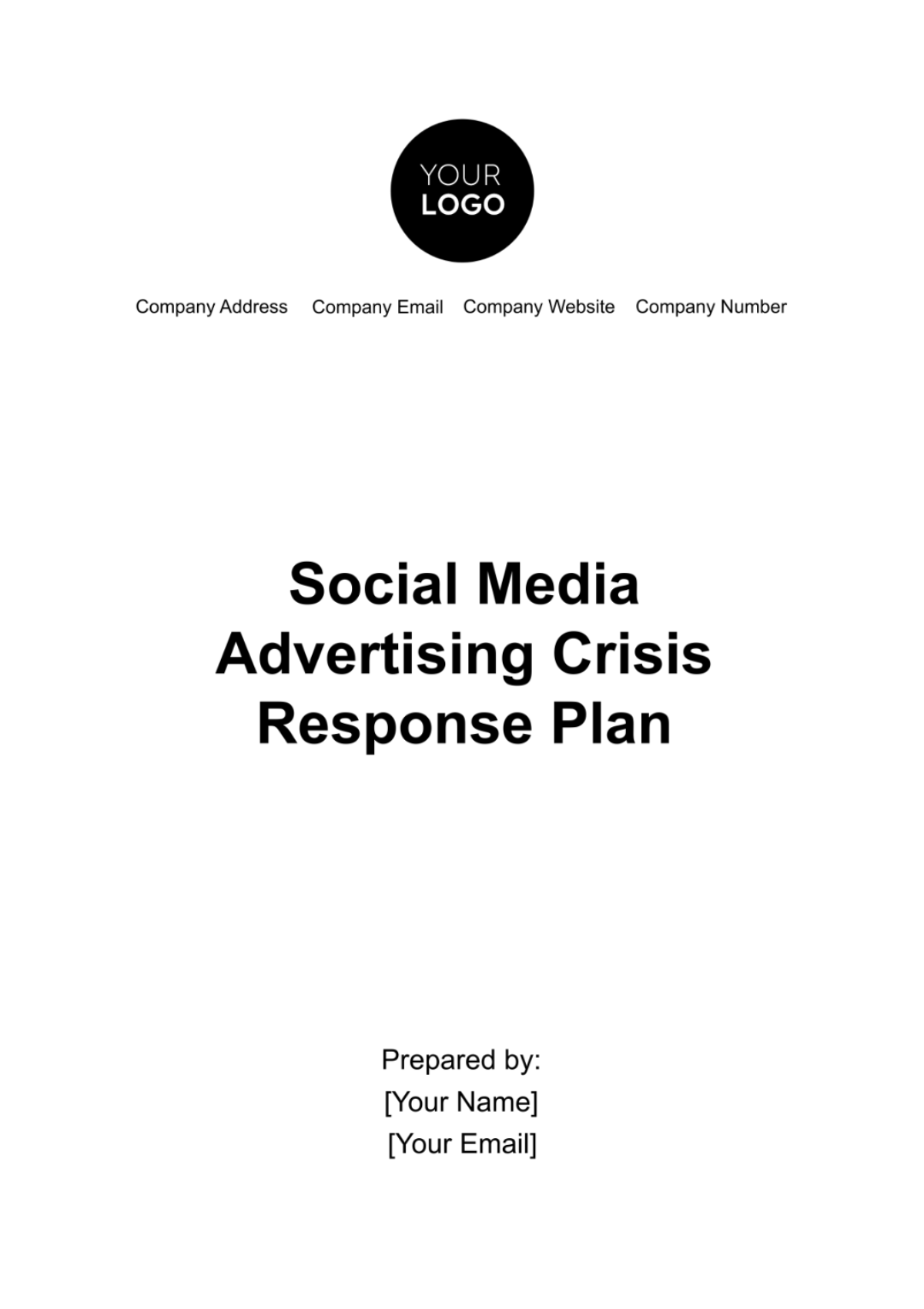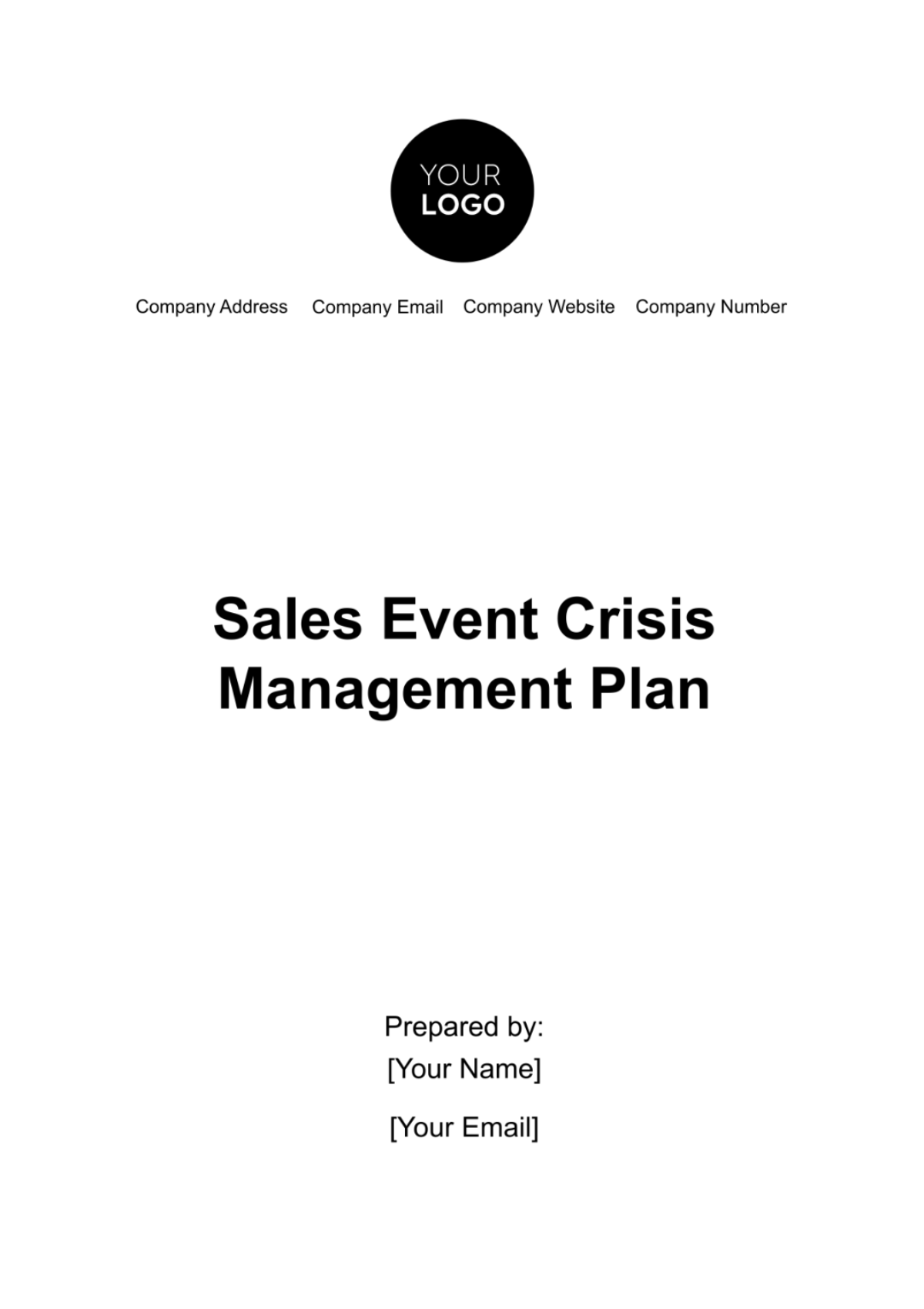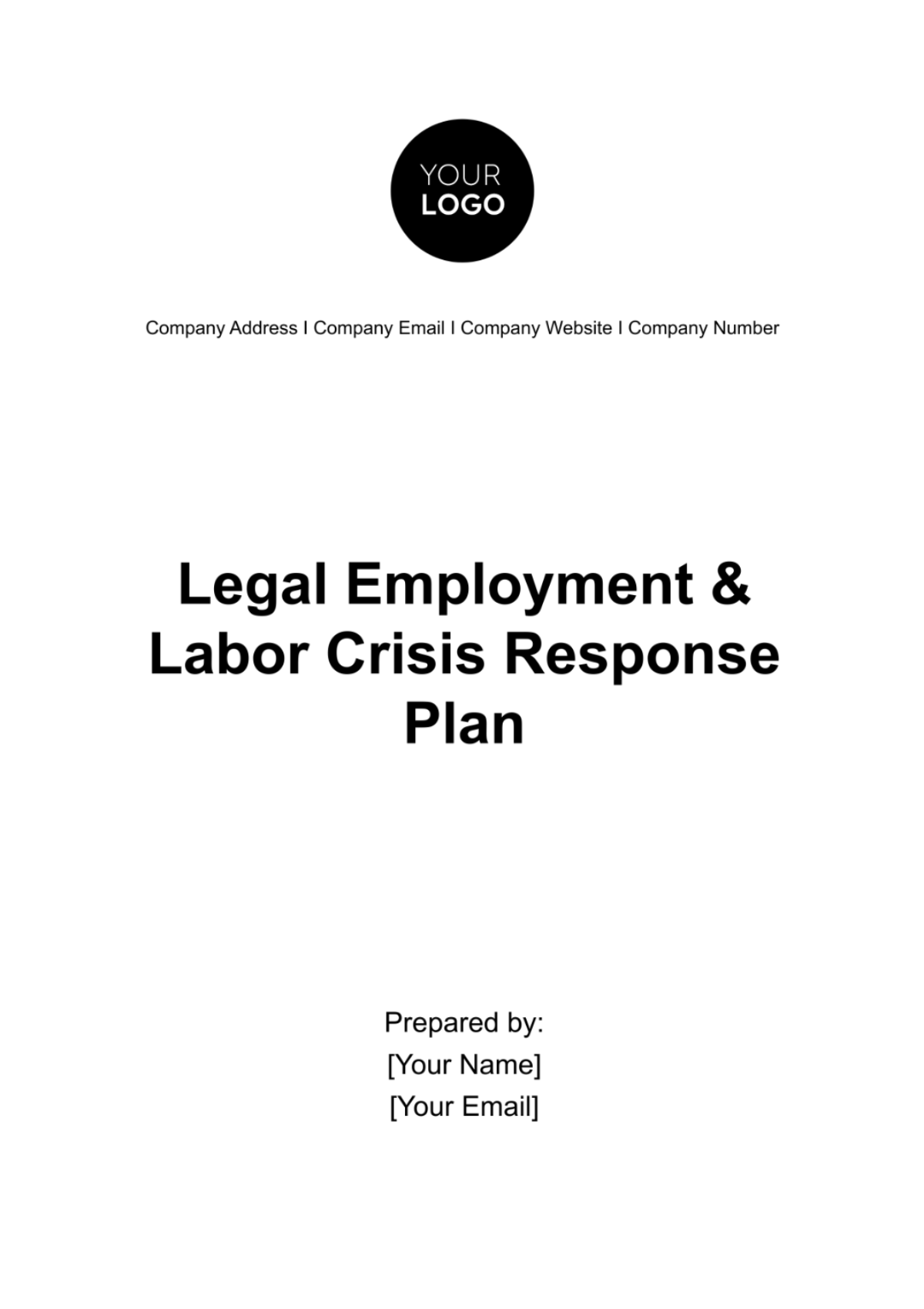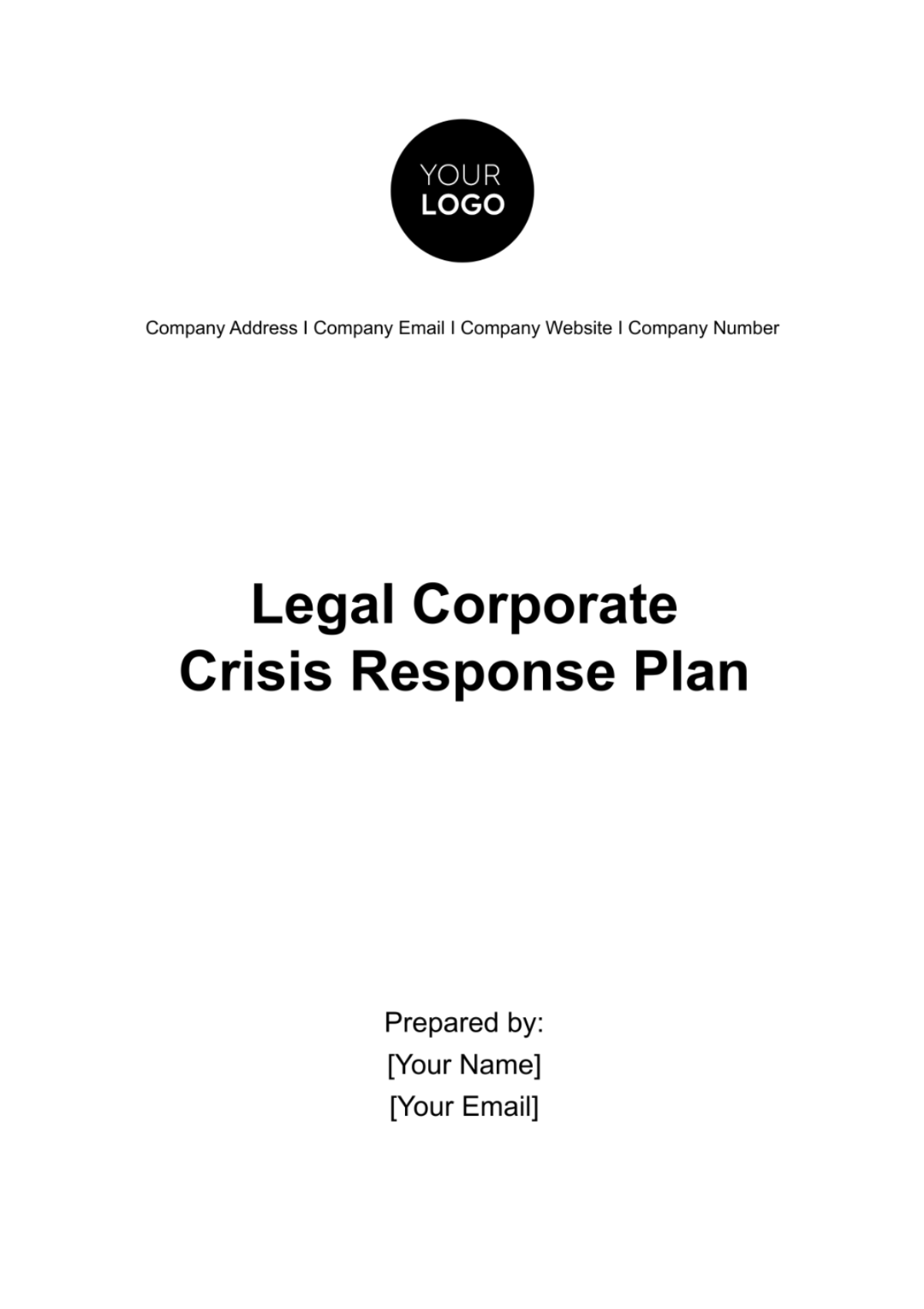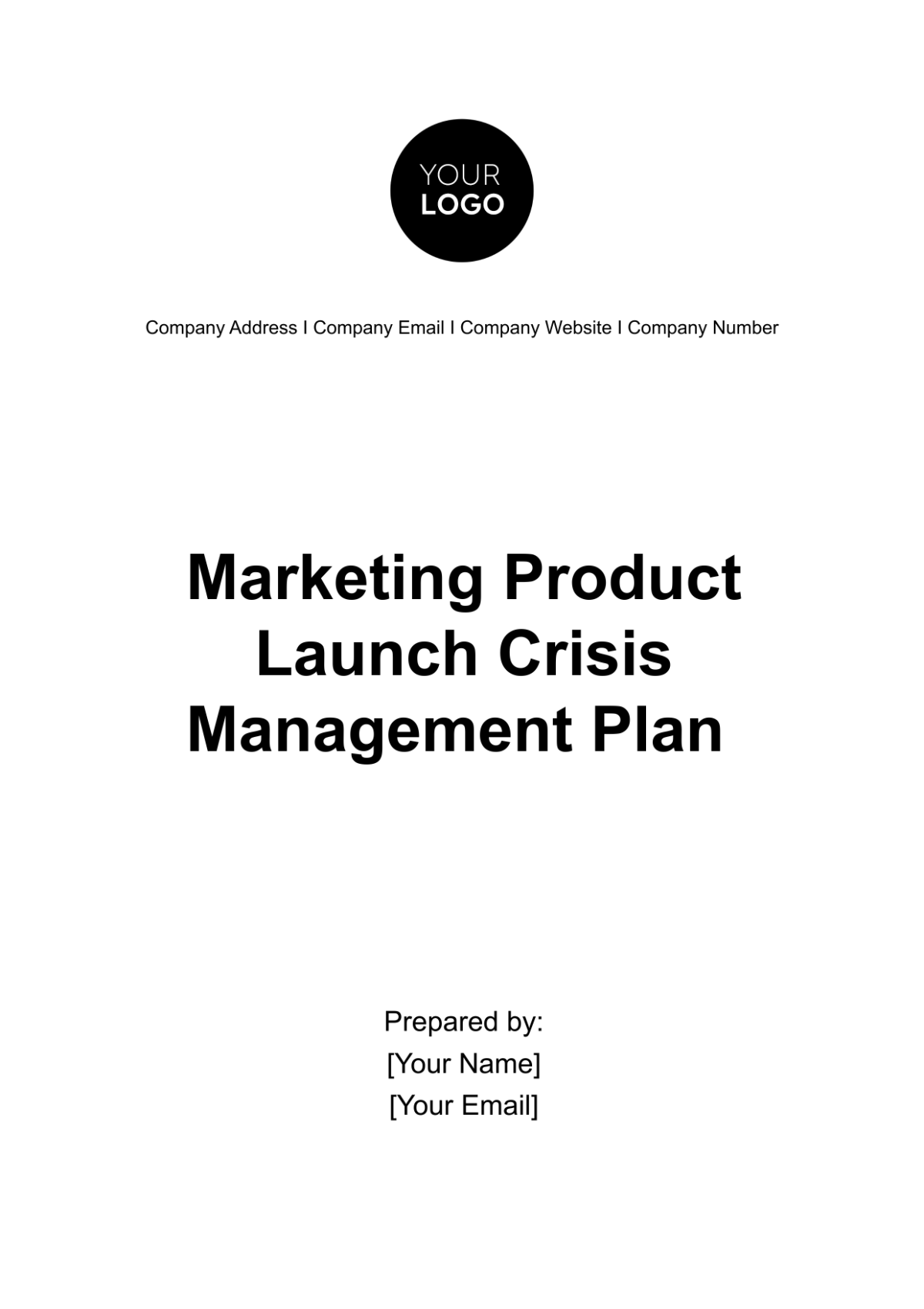Marketing Event Crisis Management Plan
Introduction:
A. Purpose of the Plan
The Marketing Event Crisis Management Plan is a critical document that serves as a roadmap for [Your Company Name] in effectively responding to and recovering from unexpected crises that may arise during our marketing events. Its primary purpose is to minimize damage to our company's reputation, protect our stakeholders' interests, and ensure the safety of all involved parties.
This plan is designed to be adaptable and robust, addressing crises that may vary in nature, such as logistical issues, public relations challenges, security concerns, or natural disasters. By providing a structured approach to crisis management, it equips our team with the tools and guidelines necessary to respond swiftly and effectively, promoting resilience and minimizing the potential impact of a crisis.
B. Scope
This Marketing Event Crisis Management Plan encompasses all marketing events organized by [Your Company Name] from the year 2050 onwards. These events can range from small-scale seminars and workshops to large conferences and product launches. Regardless of the event's size, this plan ensures that we are prepared to handle any crisis scenario effectively.
Preventive Measures:
A. Risk Assessment
A thorough risk assessment is a foundational element of our crisis management strategy. Prior to each marketing event, a dedicated team, led by the Risk Assessment Officer, will conduct a detailed analysis of potential risks and vulnerabilities. This assessment considers factors such as location, weather conditions, participant demographics, and event logistics.
The outcome of this assessment will be documented, and a risk matrix will be created, categorizing risks as low, moderate, or high. This matrix guides subsequent planning and preparedness efforts, ensuring that we allocate resources and attention to areas of greatest concern.
B. Crisis Communication Team
The cornerstone of our crisis response strategy is the Crisis Communication Team, comprising seasoned professionals from various departments within our organization. The team's composition is as follows:
[Your Name] (Crisis Manager): Overall responsibility for crisis management and decision-making.
[Team Member 1]: Public Relations Specialist, responsible for managing external communications.
[Team Member 2]: Security Officer, tasked with assessing security risks and implementing safety measures.
[Team Member 3]: Legal Counsel, providing guidance on legal aspects of crisis management.
[Team Member 4]: Event Coordinator, overseeing logistical aspects of crisis response.
This team is assembled well in advance of each event, ensuring that each member is familiar with their roles and responsibilities.
C. Training and Preparedness
To ensure that our Crisis Communication Team is prepared to handle crises effectively, regular training sessions and drills are conducted. These sessions involve realistic scenarios that simulate potential crisis situations, allowing team members to practice their roles and decision-making under pressure.
Mock scenarios may include scenarios such as sudden weather emergencies, public relations crises, or logistical breakdowns. These exercises serve the dual purpose of enhancing individual skills and fostering seamless collaboration among team members.
Response Strategy:
A. Notification and Activation
When a crisis occurs, timely notification and activation of the Crisis Communication Team are of utmost importance. This section outlines the specific steps that will be taken:
Notification Protocol: In the event of a crisis, any team member who becomes aware of the situation will immediately notify the Crisis Manager, [Your Name], through the dedicated crisis hotline ([Your Company Number]).
Activation: Upon receiving notification, [Your Name] will activate the Crisis Communication Team. This activation includes notifying all team members and convening at the designated crisis management center, located at [Your Company Address].
The swift activation of the team ensures that we can respond to crises in a coordinated and efficient manner, minimizing potential damage.
B. Assessment of the Crisis
Once the Crisis Communication Team is activated, the next critical step is to assess the nature and severity of the crisis. This involves gathering information, data, and reports related to the crisis, such as:
Event Logs: Detailed records of the event's activities leading up to the crisis.
Witness Statements: Accounts from attendees or staff who observed the crisis.
External Reports: Information from authorities, emergency services, or local agencies.
This data will be used to determine the crisis's scope, potential impact, and risks to our reputation, allowing for a well-informed response strategy.
C. Stakeholder Communication
Effective communication during a crisis is paramount to maintaining trust and credibility. This subsection outlines the principles of stakeholder communication:
Transparency: [Your Company Name] is committed to open and honest communication with all stakeholders. We will provide regular updates on the situation, even if all details are not yet known.
Spokesperson: A designated spokesperson, typically [Your Name] or an appointed representative, will communicate with the media and external parties. All other team members will direct inquiries to the spokesperson.
Regular Briefings: Regular briefings will be held with team members to ensure alignment and a consistent message.
Social Media Management: A social media team will manage [Your Company Name]'s social media channels to address inquiries, share updates, and prevent the spread of misinformation.
Mitigation and Recovery:
A. Immediate Actions
Safety First: The safety of all attendees, staff, and participants is our top priority. Depending on the nature of the crisis, evacuation procedures or medical assistance will be initiated immediately.
Resource Allocation: The Crisis Communication Team, under the guidance of [Your Name], will determine the allocation of resources to address the crisis effectively. This includes personnel, equipment, and financial resources.
Crisis Control Center: [Your Company Address] will serve as the central coordination center for crisis management activities. It will be equipped with necessary communication tools, medical supplies, and logistical support.
Event Continuity Assessment: A critical decision will be whether to continue or suspend the event. This decision will be based on the crisis assessment and its impact on the safety and experience of attendees.
B. Resource Allocation
Resource allocation is a crucial aspect of crisis management. This table illustrates how resources are allocated based on the nature and severity of the crisis:
Resource Allocation Matrix
Resource Type | Low Severity Crisis (%) | Moderate Severity Crisis (%) | High Severity Crisis (%) |
Personnel | 30% | 50% | 70% |
Financial Resources | 20% | 40% | 60% |
Equipment and Supplies | 20% | 30% | 50% |
Emergency Services | 10% | 30% | 50% |
Public Relations | 10% | 20% | 30% |
Legal Support | 10% | 20% | 30% |
This matrix provides a clear guidline for resource allocation based on the crisis's severity, ensuring that resources are deployed efficiently.
C. Communication Channels
Effective communication is key during crisis management. The following channels will be utilized to keep stakeholders informed:
Public Announcements: Timely press releases and public statements will be issued through official channels, emphasizing our commitment to resolving the crisis.
Social Media Updates: Regular updates will be posted on [Your Company Name]'s social media platforms to reach a wider audience and provide real-time information.
Direct Communication: Attendees, sponsors, and stakeholders will receive direct communication via email, SMS, or phone calls to ensure they are aware of the situation and any event changes.
Monitoring and Evaluation:
A. Post-Crisis Analysis
Once the crisis has been effectively managed, a comprehensive post-crisis analysis will be conducted. This analysis aims to:
Assess the Response: Evaluate the effectiveness of our response strategy, including the decisions made, actions taken, and their impact.
Identify Lessons Learned: Identify areas where improvements can be made in our crisis management procedures, such as communication, resource allocation, or risk assessment.
Document Successes: Recognize the successful aspects of the response and acknowledge the efforts of team members who contributed to crisis resolution.
B. Feedback Mechanism
Feedback from various stakeholders, including attendees, sponsors, team members, and external agencies, is critical for continuous improvement. This feedback will be collected through:
Surveys: Post-event surveys will be sent to attendees to gather their feedback on crisis management and overall event experience.
Team Debriefing: The Crisis Communication Team will hold a debriefing session to discuss what went well and areas that need improvement.
External Agencies: Feedback and insights from external agencies, such as local authorities or emergency services, will be considered for future preparedness.
Media Relations Strategy
Our Media Relations Strategy is a crucial component of our crisis management plan. It ensures that we maintain control over the narrative and provide accurate information to the public and media outlets. This strategy includes:
Spokesperson Responsibilities: Clearly defined roles and responsibilities for spokespersons, including media briefing schedules and message consistency.
Key Messaging: Pre-prepared key messages and talking points to address various crisis scenarios.
Media Monitoring: Continuous monitoring of media channels to stay informed about public perception and emerging issues.
Media Training: Ongoing media training for spokespersons to handle interviews, press conferences, and inquiries effectively.
Press Release Templates: Pre-designed press release templates that can be quickly customized to address specific crisis situations.
Social Media Management: Guidelines for managing social media channels during a crisis, including the approval process for social media posts.
Charts and Data
In this section, we provide visual representations of data that may be relevant to crisis management and evaluation. These charts help stakeholders quickly grasp critical information:
A. Event Risk Assessment
This chart represents the distribution of risks for marketing events:
B. Crisis Severity Assessment
This chart illustrates the severity of crises that may occur during events:
Appendix
A. Contact Information
This section provides a comprehensive list of contact information for key personnel, external agencies, and resources that are vital for efficient crisis management and recovery:
Internal Contacts:
[Your Name], [Position]
Email: [Your Email]
Phone: [Your Company Number]
